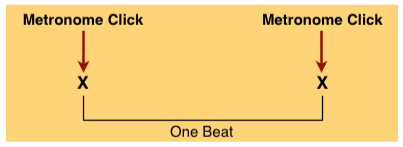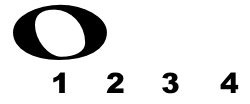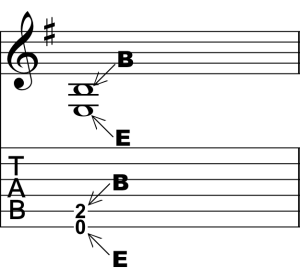Everything you play on the guitar will involve using one or more of the following musical elements…
- Melody (This is when you play one note at a time).
- Harmony (This is when you play two or more notes at a time).
- Rhythm (This is the timing of the notes that you play).
I’ve noticed over the years of teaching that many guitarists focus a great deal on the notes they play, while neglecting the rhythmic aspect of what they’re playing. This is a shame, because developing a strong rhythmic ability is critical to playing guitar well. (I can’t think of a single guitarist that I like who doesn’t have a well-developed rhythmic perception).
Because developing your rhythmic ability is such an important part of becoming an excellent guitarist, I thought it would be a good idea to write a series of lessons that focus on the basics of rhythm. Over the course of these lessons we’ll be taking a look at the following note values…
- Whole Notes
- Half Notes
- Quarter Notes
- Eighth Notes
- Sixteenth Notes
We’ll also be covering some important rhythmic concepts such as beats, tempo, and time signatures. (These are essential things you need to understand if you want to understand more advanced rhythmic concepts).
Let’s kick things off by taking a look at the concept of beats…
The Beat
Many guitarists don’t have a clear and precise understanding what an actual beat is in music. This is a major problem, because if you don’t understand what a beat is then you’re not going to understand rhythm.
So let’s do an exercise to test your understanding. Please grab your metronome now, and do the following steps…
Step 1: Turn on your metronome to 60 clicks per minute. (If you don’t own a metronome, then stop reading this now and go buy one).
Step 2: Listen to the metronome click for at least 3 minutes.
All done? Good stuff! Now here’s an interesting question…
If I asked you what a beat is, what would you say? If you’re like many guitar players you would say that a beat is when the metronome clicks. Technically this is not correct. If you use a metronome to measure the beats then a beat is the time in between each of the metronome clicks. (In other words, it is the time it takes to go from one click to the next click).
Here is a diagram showing this…

I like to think of a beat as a specific amount of time in music. If the metronome is clicking fast then the beat is a shorter amount of time. If the metronome if clicking slowly then the beat is a longer amount of time.
Tempo
In music we measure time based on how many beats per minute there are. This measurement is called the tempo of the music. For example…
- If you set your metronome to 60 clicks per minute then the tempo is 60 beats per minute (bpm).
- If you set your metronome to 200 clicks per minute then the tempo is 200 bpm.
Now that we’ve covered a couple of the basic rhythm concepts, let’s now take a look at a thing called whole notes…
Introducing Whole Notes
I’m going to warn you now that we’re going to be covering a little bit of standard musical notation in these lessons. There are a few reasons for this…
- Musical notation gives you a visual representation of rhythm. (This will help you to understand and memorize rhythm greatly).
- It makes my job of teaching you rhythm a lot easier. Call me lazy if you want! 🙂
- Learning a bit of notation will help make you a well-rounded musician.
Keeping these benefits in mind, let’s check out this bad boy…

This symbol is used in music to represent a whole note. This is a note that lasts for four beats.
Whole Note Timing Exercise
I think that playing the rhythms you’re learning is essential. It’s impossible to develop your rhythmic ability just by reading about rhythm. You need to hear it. So let’s take a look at a good way of practising whole notes. Please check out the exercise below…

To play this exercise you’ll need to do the following…
- Choose a single note on your guitar to play.
- Turn on your metronome to 60 bpm.
- Using all downstrokes, play the note you chose in Step 1 using whole note timing. This means that each time you play the note it will need to last for four beats.
- Keep playing the note repeatedly using whole note timing for at least a couple of minutes.
To get the most out of the exercise, I recommend doing two things as you play the exercise…
- Tap your foot to the metronome click.
- Count the beats out aloud as you play.
It would also be a great idea to record yourself playing the exercise. This way you can listen back to yourself and see just how accurate your timing was. It can be a bit of an eye-opener to realize that your timing isn’t as good as you thought it was!
Whole Note Chord Progression
Let’s now take a look at a chord progression that uses nothing but whole notes…

The way I’ve notated this progression is by using both TAB and standard notation. This is a very common method of notation used in countless guitar books. The cool thing about this method is that you can use the TAB to find out the notes that you need to play, and you can use the standard notation to see what timing needs to be used when you play those notes.
You might be wondering why there are two whole note symbols being used in each bar. This is done because we’re playing two note chords. Each note of the chord is shown in the standard notation by a whole note symbol. Let’s zoom in to the first bar of the progression to take a closer look…
 If you work out the notes shown in the TAB on the left, you’ll discover that the chord being played uses the notes E and B. These exact same notes are notated in the standard notation. This is why there are two whole notes written there. Each of the whole notes represents a note that is in the chord.
If you work out the notes shown in the TAB on the left, you’ll discover that the chord being played uses the notes E and B. These exact same notes are notated in the standard notation. This is why there are two whole notes written there. Each of the whole notes represents a note that is in the chord.
Now that I’ve explained the mystery of the double whole notes, I think it would be a great idea for you to learn to play the chord progression.
As you play the progression, I really recommend tapping your foot to the metronome click, and also counting the beats out aloud. These suggestions will help you to improve your timing, and will also help you to understand rhythmically what you’re playing.
A Few Last Words
I hope you enjoyed this short introduction to rhythm. Be sure that you practice the exercise and the chord progression. Doing this will help lay the rhythmic foundation that is necessary for more advanced rhythms.
Until next time, have fun!
Return To: Guitar Music Theory Lessons